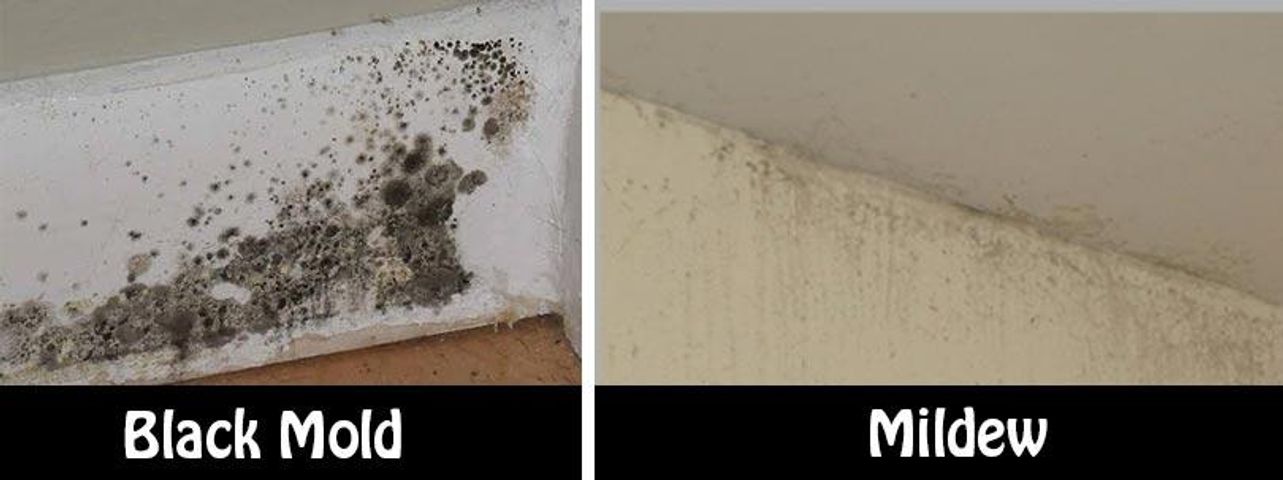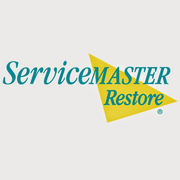ServiceMaster Expert Information: Mildew vs Mold

While there are many differences between the two fungi, mold and mildew both develop and thrive in moist conditions. A leaking roof, a window that doesn’t seal properly, and a basement with water damage caused by a broken pipe can all lead to the growth of mildew and mold. In order to reduce the risk of illness and damage to building materials, mildew and mold in the home or a business need immediate mold remediation. Continue reading to learn more about the differences between mold and mildew, and the danger both may present to your home or business.
Mildew vs Mold
Plain and simple, mildew and mold are fungi. Fungi can live in many different types of habitats such as in soil, on vegetation, and on surfaces exposed to moist conditions like a wall or ceiling after flood damage. Fungi reproduce by spores and quickly can spread.
What is mildew? Mildew is mold in its early stage and often the term is used interchangeably with the word mold. That whitish-gray, powdery substance sometimes seen on the leaves of a plant is mildew. Mildew is a surface fungi that grows on organic material like plants and food as well as wood or fibrous items like:
- Drywall
- Insulation
- Cardboard/paperboard
- Wallpaper
- Fabric
How is it different from Mold? Mold ranges in color from green to gray, brownish and black. It may appear fuzzy, flat or even slimy. Green slimy mold may develop in the damp, shady areas of decks and even vinyl siding, while indoors, mold can develop on grout, tile and other surfaces found in and around bathrooms and other areas with high humidity and inadequate ventilation.
Pro Tip: Slimy mold on decks, fences and siding often can be removed using a pressure washer. Always wear proper safety protection when dealing with mold and working with tools.
Dangers of Mildew and Mold
In a battle between mildew vs mold, which presents more problems and danger? It depends on several factors.
The powdery mildew often found on the leaves of a houseplant, typically poses little danger to you, but it can harm the plant. However, anyone that suffers from mold allergies should avoid touching that mildew. If contact occurs, wash hands thoroughly and never touch your face/eyes/nose after coming in contact with mildew.
According to the Centers for Disease Control and Prevention (CDC) exposure to mold can cause the following reactions:
- Nasal stuffiness
- Eye irritation
- Wheezing
- Skin irritation
- Fever
- Shortness of breath
- Coughing
- Increased asthmatic symptoms
People suffering from compromised immune systems, chronic upper respiratory illnesses and asthma are at a higher risk for reactions when exposed to mold.
The Need for Mold Remediation
Mold and mildew, if ignored, can cause long-term health issues and physical damage to a home or business. Mold found anywhere in a building, such as behind drywall, on insulation, around windows and along basement walls has developed because there is a moisture problem. To avoid further damage, it’s essential to locate and correct the source of the moisture and then remove all traces of mold.
Any home or business that’s suffered any type of water damage (from firefighting efforts, roof leak, burst pipe or flood) needs professional assessment quickly. Contact ServiceMaster of Columbia immediately after any water disaster; mold can begin developing within 24 to 48 hours. Trust our professional technicians for a comprehensive mold remediation plan. Call 573-443-8383.
For more tips and information about mold, check us out on our Website, Facebook, and Twitter. If you would like to contact our office feel free to send us an email to missourimasterofdisaster@gmail.com or call our office at 573-443-8383! We are here and ready to serve you whenever you need us!
About the Business
Have a question? Ask the experts!
Send your question

